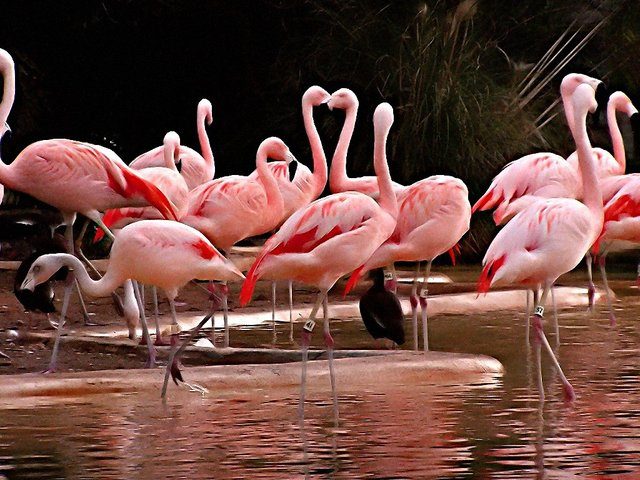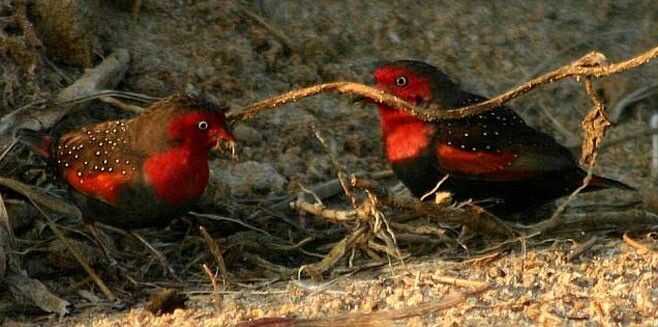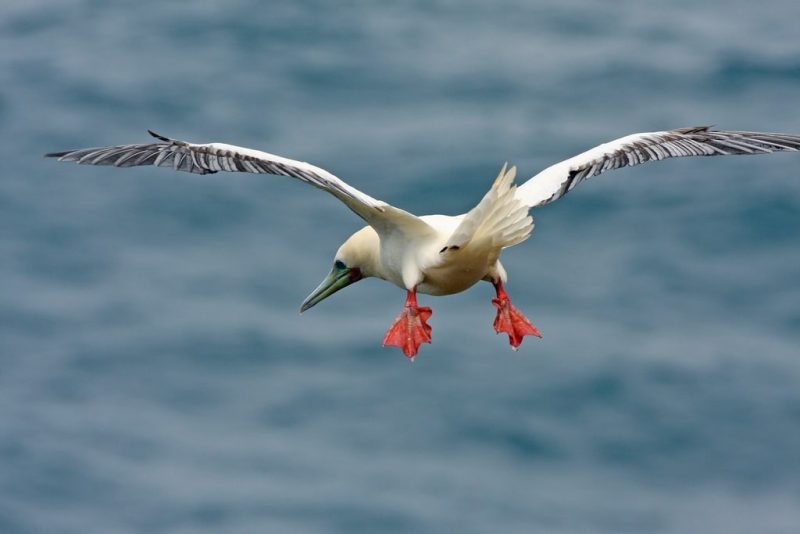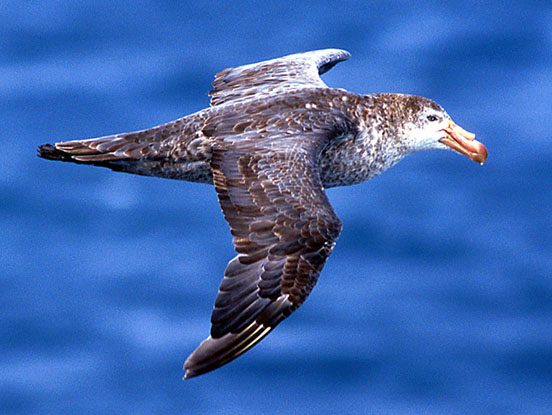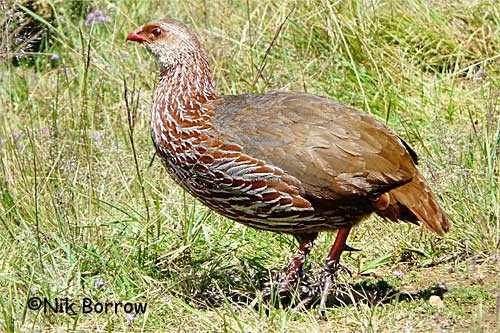The Iconic Lesser Flamingo Of Kenya
The iconic lesser flamingo of Kenya. One of the aspects of a wild life package to Kenya is a well-deserved visit to Lake Nakuru. The well famous and lovely Lake Nakuru of Kenya is in the province of Rift Valley, which borders the nearby country of Uganda. Moreover, this lake is home to 13 threatened bird species in the world and the highest bird ranges world wide.
Flamingos
An incredible feature of the lake is the large gathering of long-necked, long-legged Greater and Lesser Flamingos. The lake that is sited in Nakuru national park and is surely a flamingo par excellence. Further, fresh water streams from the mountain surround the superb Lake Nakuru. They trickle through moss-covered rocks, nourishing the green leaves and long grasses sweeping low to the ground. These birds love to bathe and frolic in the mountain water of the streams. Then they rinse off the salt that would otherwise harden their feathers, making them unable to fly.
Greatest avian sight
Two-thirds of the population of flamingos occur in southern and East Africa. Scientists reckon that the numbers of these cool water birds at Nakuru is often more than two and a half million. Interestingly, when heading for their breeding area, these birds fly in gorgeous V shapes. The birds rely on distinct places in which to hatch their eggs, and never breed when captive. It is a rare sight to watch the birds taking off in a surge from the surface of Lake Nakuru, showing the blue water under their crowded wings.
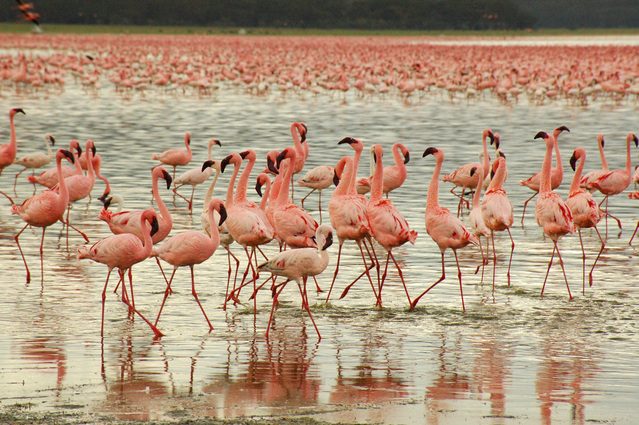
The iconic Lesser Flamingo of Kenya
The number of flamingos flocking Lake Nakuru is stunning. Guests touring this semi-arid region cannot help but visit this place. Tourists to Lake Nakuru describe it as the greatest sight in the world. Nature has not been able to copy this scene anywhere due to the distinct area required by the birds. Hence, making a trip through Nakuru national park is a must.
Lesser and Greater
Lesser Flamingos are different than Greater Flamingos by more rosy features, crimson legs, and a more dark beak, while their smaller size becomes more seen when the 2 of them are together. The most seen and unique feature of the Lesser Flamingo is its pink plumage and deep red carmine bill. The Greater Flamingo has a bill with a black tip. Oddly pink in colour and shaped atop tall, stilted, bald legs with knees that bend backward while walking, these birds are the most iconic birds on earth.
Favorite cuisine galore
Lake Nakuru in Rift Valley is the main foraging site for the Lesser Flamingo anywhere. The abundance of the blue-green alga in the lake attracts the flamingos that line the shore. Impressively, they consume about hundreds of thousands of such algae per hectare every year. The algae come from a mixture of their droppings and the plankton in the warm alkaline waters. These birds eat them by dipping their large, beak into the water and eject nutrients through their nasal filters, and in the process, retain the cyanobacterium, algae, and spirulina that they feed. Thereby, the nutrients that they leave gives the lake its blue-green color and the pigment in Spirulina gives the birds their pink hue. Lake Nakuru has grown in significance and size and offers a rare vision of the lofty birds dipping their necks in search of their morsel.
Threats to survival
There are several factors that are threatening the survival of flamingos, unfortunately, as they require a very highly-specialized diet and habitat. Recently, the flamingos have been decreasing in numbers due to pollution resulting from industries, an excess of tourism, water works nearby dumping waste into Lake Nakuru or because of changes in the quality of water which makes the lake inhospitable. Recent years have also seen wide variations in the wet and dry seasons’ water levels. The collective watershed land conversion, intensive crop production, and urbanisation reduce the soil’s capacity to absorb water and recharge groundwater causing increased seasonal flooding during the wet season. The increasing rise in the water levels of the floods adversely affects the ecosystem of the lake. On the other hand, during the dry season when the lake recedes, drought and pollution destroy the flamingos’ food.
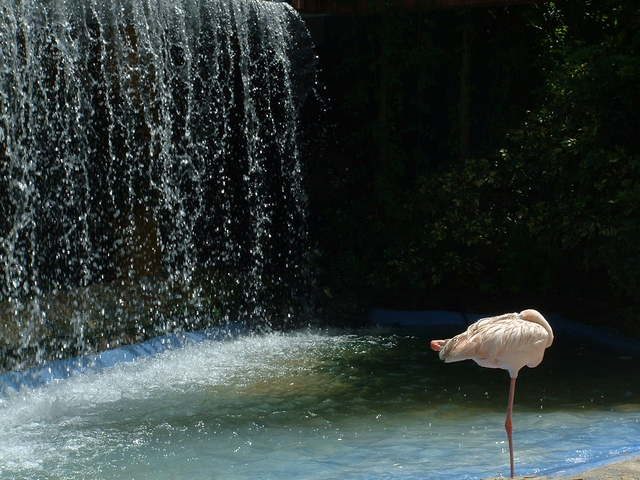
The flamingo the waterfall
These phenomena have caused a drop in the salinity of the water causing them to migrate elsewhere. Today, the majority of the pink, massed flocks are seen more at the other Rift Valley lakes such as Bogoria, Elmenteita, Magadi, Simbi Nyaima, and Natron. They migrate in unison between the lakes in the Rift Valley not only as the food sources deplete but also when the season to breed arrives. It implies that a positive change towards their survival status depends on enhancing the environment that they live.
Mitigating survival risks
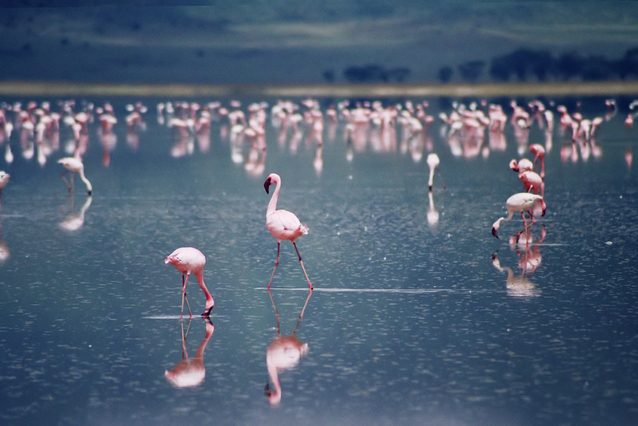
Flamingo
Regulations and favorable state policies can bring about drastic changes in the habitat of flamingos as well as eradicate the depletion of their food sources. Promoting eco-tourism within the region and implementing measures to reduce pollution can make Lake Nakuru a more hospitable habitat for these exotic birds. Alongside, the government should have strict penalties for those culprits who use the lake as a dumping ground. Doing damage control is a good starting point to improve the quality of the lake water. Part of the tourism revenue must go for this purpose. Failure to do so would be at the peril of making the flamingos extinct sooner than later.
5 frequently Asked Questions About Flamingos
To stay in Nakuru and watch the flamingos, please fill out the following form or simply email us on safaris@safari-center.com

